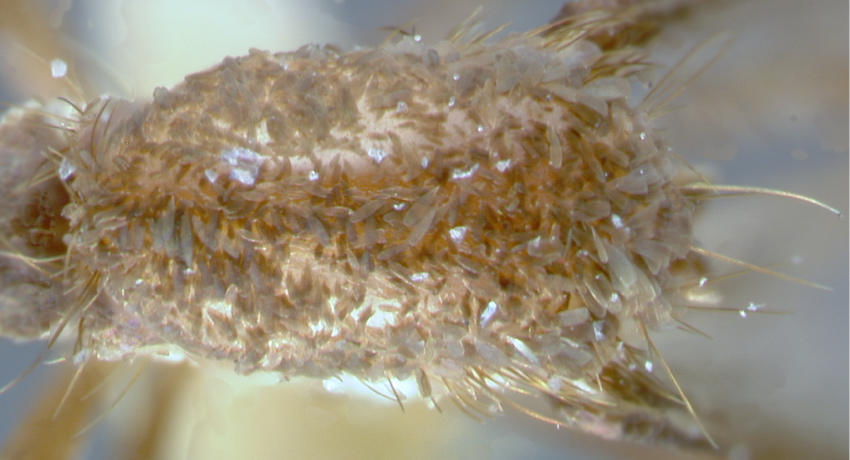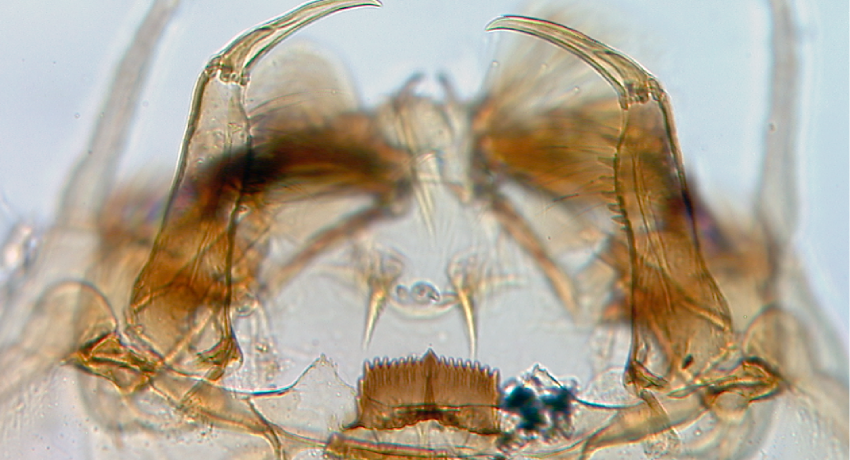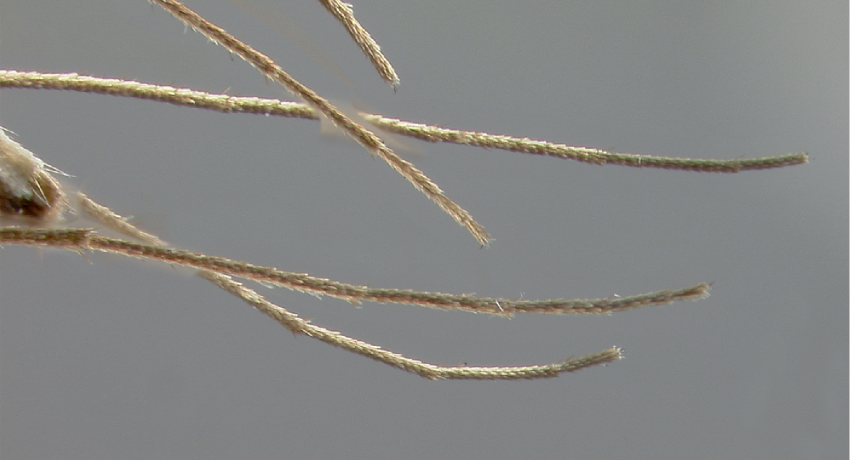NEOTROPICAL REGION
Generic abbreviation: Is.
Type species: Aedes perturbans Williston
Etymology: not stated [poss. ref. to iso- the same, “Proboscis, feet and abdomen wholly black-scaled”].
The genus Isostomyia comprises only four valid species: Is. espini (Martini), Is. lunata (Theobald), Is. paranensis (Brèthes) and Is. perturbans (Williston). Before finally being elevated to generic status by Harbach and Peyton in 1993, these four species were first pulled from the genus Trichoprosopon by Zavortink in 1979, and placed as a subgenus of Runchomyia. Based on morphology, Isostomyia, Shannonia and Runchomyia (Ctenogoeldia) appear most closely related. Larvae of Isostomyia paranensis seta 9–12-T share a common plate with 13-T—an unusual character only present in Kimia and Trichoprosopon. Except for their muted greenish-blue head scales, species of the genus Isostomyia are incredibly dull compared with other members of the tribe Sabethini.
DIAGNOSTIC CHARACTERS (Click photos to view; mouse over and click large photo to zoom in.)
ADULT (illustrated): Head: Dorsal head scales with muted green to blue reflective colors. Thorax: Scutum with broad, flat scales; posterior postpronotal setae absent; dorsal margin of hindcoxa (C-III) about level with base of mesepimeron. Legs: Fe-I shorter than proboscis; Ta-I–III1–5 all dark.
LARVA (not illustrated): Head: Maxillary brush (MxB) elements coalesced into a claw. Terminal segments: Seta 6-S strongly developed, recurved at tip; pecten scales fine and hair-like; seta 3-X branched.
TAXONOMIC KEYS
None
![]()
WRBU – Genera – Global – Larva
![]()
WRBU – Genera – Neotropical – Adult
![]()
WRBU – Genera – Neotropical – Larva
Exemplar DNA sequences
None
BIONOMICS
Immatures
In all Isostomyia larvae, the elements of the maxillary brush have fused to form a strong claw, strongly indicative of predation. Isostomyia espini are typically found in the leaf axils of aroids (Philodendron), whereas Is. paranensis is found in marshy wetlands dominated by Scirpus giganteus plants.
Adults
Isostomyia espini females are attracted to CDC light traps, and will readily feed on humans, even entering houses to bite. They can become numerous in rural villages, especially in those close to aroid plantations. In Is. paranensis, females will feed on people outdoors, but lab-reared females appeared autogenous, suggesting the species mates on the wing. Egg batches were of similar sizes following both blood-induced and autogenous oogenesis.
*Associated pathogens: This list reports bacteria, viruses, and parasites recovered from, or experimentally passed through this species, and does not imply field vector status.
IMPORTANT REFERENCES (full citations below)
Zavortink 1979b: 12 (as subgenus of genus Runchomyia)
Harbach & Peyton 1993 (L mouthparts; classification, phylogeny; to genus)
Judd 1996 (phylogeny)
Harbach & Kitching 1998 (phylogeny)
Harbach & Peyton 2000 (phylogeny)
VALID SUBGENERA
None
CURRENT GENERIC SYNONYMS
syn. Goeldia, subg. Isogoeldia Edwards 1930a: 301. Type species: Aedes perturbans Williston. Coquillett 1910.
CITED REFERENCES
Coquillett, D.W. (1910). The type-species of the North American genera of Diptera. Proceedings of the United States National Museum, 37, 499–647.
Edwards, F.W. (1930a). Mosquito notes. IX. Bulletin of Entomological Research, 21, 287–306.
Harbach, R.E. & Kitching, I.J. (1998). Phylogeny and classification of the Culicidae (Diptera). Systematic Entomology, 23(4), 327–370.
Harbach, R.E., & Peyton, E.L. (1993). Morphology and evolution of the larval maxilla and its importance in the classification of the Sabethini (Diptera: Culicidae). Mosquito Systematics, 25(1), 1–16.
Harbach, R.E., & Peyton, E.L. (2000). Systematics of Onirion, a new genus of Sabethini (Diptera: Culicidae) from the Neotropical region. Bulletin of the Natural History Museum London (Entomology), 69, 115–159.
Judd, D.J. (1996). Review of the systematics and phylogenetic relationships of the Sabethini (Diptera: Culicidae). Systematic Entomology, 21(2), 129–150.
Zavortink, T.J. (1979b). The new sabethine genus Johnbelkinia and A preliminary reclassification of the composite genus Trichoprosopon. Contributions of the American Entomological Institute, 17(1), 1–61.
CITE THIS PAGE
Walter Reed Biosystematics Unit (Year). Isostomyia genus page. Walter Reed Biosystematics Unit Website, http://wrbu.si.edu/vectorspecies/genera/isostomyia, accessed on [date (e.g. 03 February 2020) when you last viewed the site].







